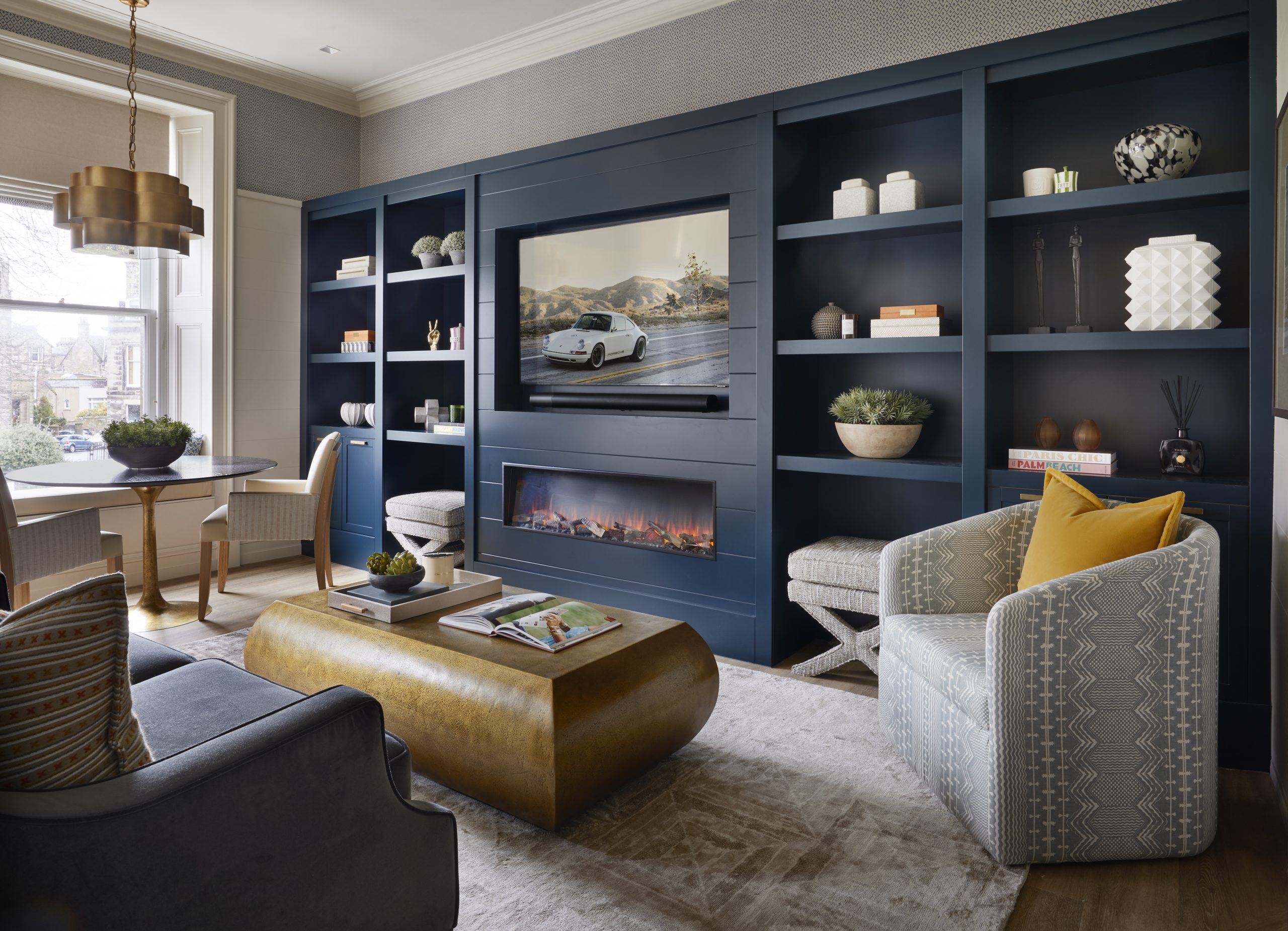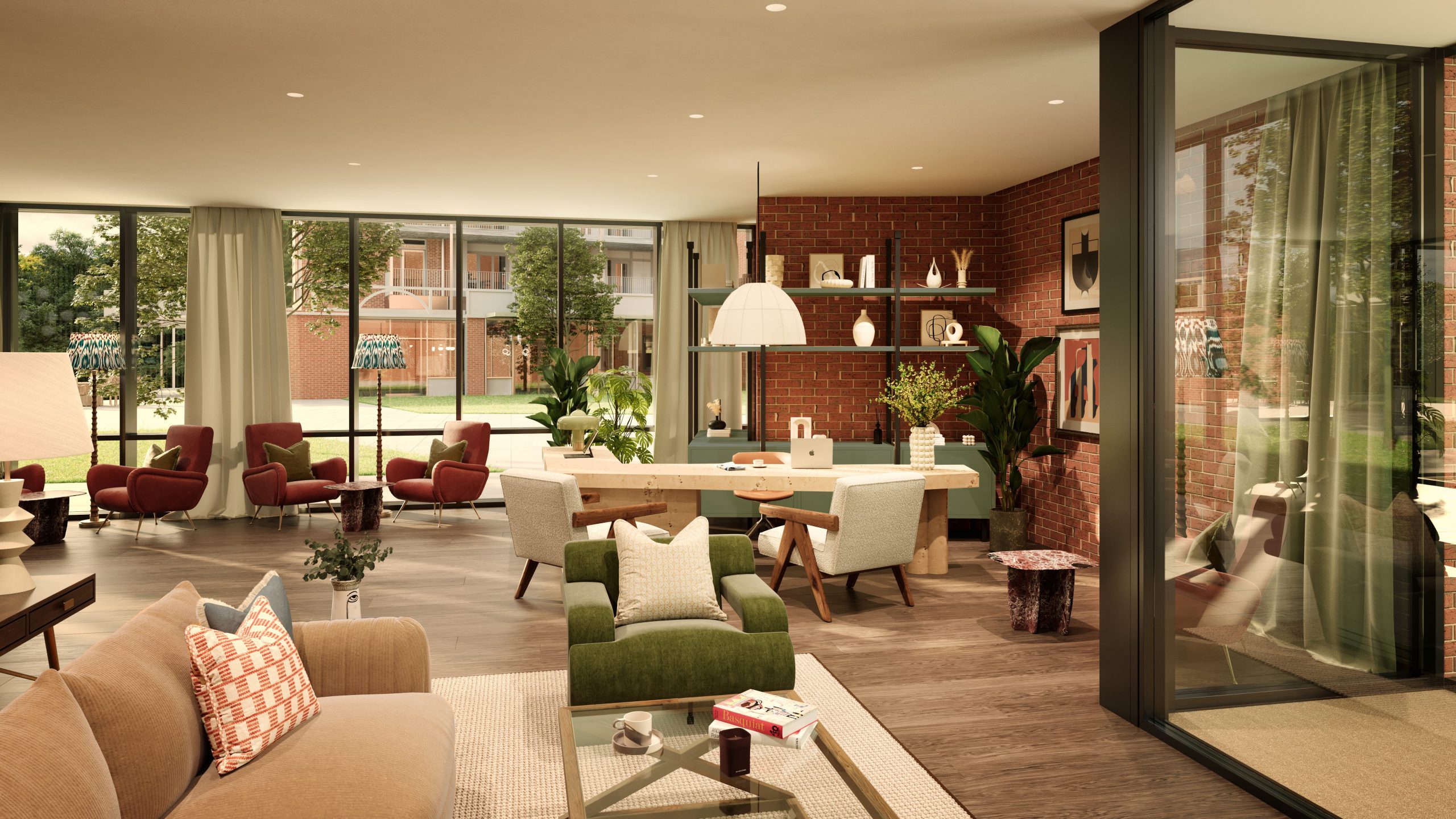When it comes to providing care, there is simply no such thing as one size fits all.
At Bernard Interiors, we’re dedicated to inclusive interior design. Our mission is to create spaces that are both functional and enjoyable for the end user, and designed to meet the individual needs of all residents, no matter their circumstances.
With the later living market developing at pace, it’s clear to see that the stereotypical care
home is slowly falling out of prevalence. Options are broadening for retired people, and
we’re delighted to see later-living villages and complexes popping up across the UK, and
are proud to play an important role in their development.
Designing for dementia is an area that our team specialises in. Dementia is not just one
condition, it is a general term for any progressive brain disease that causes a decline in
memory, problem-solving, speech, and other skills that affect everyday life.
Therefore, ensuring that our projects have the specific features needed to mitigate the
effects of this illness is paramount. We only incorporate the very latest research
into our work, meaning that we are always ahead of the curve when it comes to applying
innovative solutions that make a difference.
Let the light in
Lighting is a crucial factor to consider when designing any interior.
At Bernard Interiors, we believe that due to its abundant health and well-being benefits,
natural light should be maximised, especially in the later living environment.
To help residents orientate to varying times of the day, natural lighting can be a brilliant
tool. When natural light is allowed to pour in through large windows or skylights, it helps
residents with dementia adjust to the daytime and similarly, when the natural light
reduces, it can help regulate sleeping patterns.
The presence of a routine for a resident with dementia is essential, as it can reduce stress
and anxiety. These uneasy feelings go hand in hand with this illness, which means helping
residents to manage them is key. Another benefit of natural light is that it is proven to
boost mental well-being, which is likely to have a positive impact when trying to manage
these difficult emotions.
Contrast is crucial
Ensuring residents can navigate their home safely and effectively is one of our top
priorities.
Therefore, making use of colours that stand out is key to minimising fall risks. If a table
stands out against a specific colour, this will reduce the probability of tripping over the
table leg, for instance.
It is also essential to ensure that there is differentiation between spaces and items. For
example, different colours to signal a different room help residents to recognise their
space, whether that be a dining room, library, or communal living area. Similarly, using
distinctive colours for flooring and doors helps residents to separate the two and use the
space more effectively.
Another way we support residents is by including key features within both interior and
exterior spaces. For example, to help residents to separate indoor and outdoor areas, we
might add memorable characteristics. We often insert distinctive items, such as water
features, into the centre of the garden space. These are deliberately sourced and
positioned here to allow residents to feel more familiar with the grounds and look for the
features as a signpost when making their way outside to enjoy some fresh air.
A familiar friend
As previously mentioned, routine is very important for residents with dementia, and
familiarity can be very comforting.
When a resident moves from their own home into a later living environment, the change
can be daunting and confusing, especially when the person is affected by dementia.
Therefore, we’re driven to make life feel as normal as possible for residents, which can
sometimes include reconnecting them with what they’re used to.
For example, a number of our projects include special areas for residents to simulate
familiar experiences. One such area is the ‘Village Square’ at The Millhouse in the historical
market town of Skipton, one of our projects with Hadrian Healthcare.
The Village Square was designed by the Bernard Interiors team with bespoke joinery to
imitate the experience of visiting market stalls and potting sheds. This was created to evoke
simple memories of small tasks and everyday errands for those living at The Millhouse, so
they can find solace in feelings of normality. We have implemented this approach across a
number of our projects, taking into consideration the history of the area to ensure our
spaces support residents in every way they can.
The team at Bernard Interiors hopes that each small touch, carefully curated colour and
considered choice will bring feelings of nostalgia, curiosity, and joy to every resident. We
look forward to continuing our journey to challenge the stereotype of later living and
improve lives across the UK, bringing inclusivity and quality to every interior we design.





